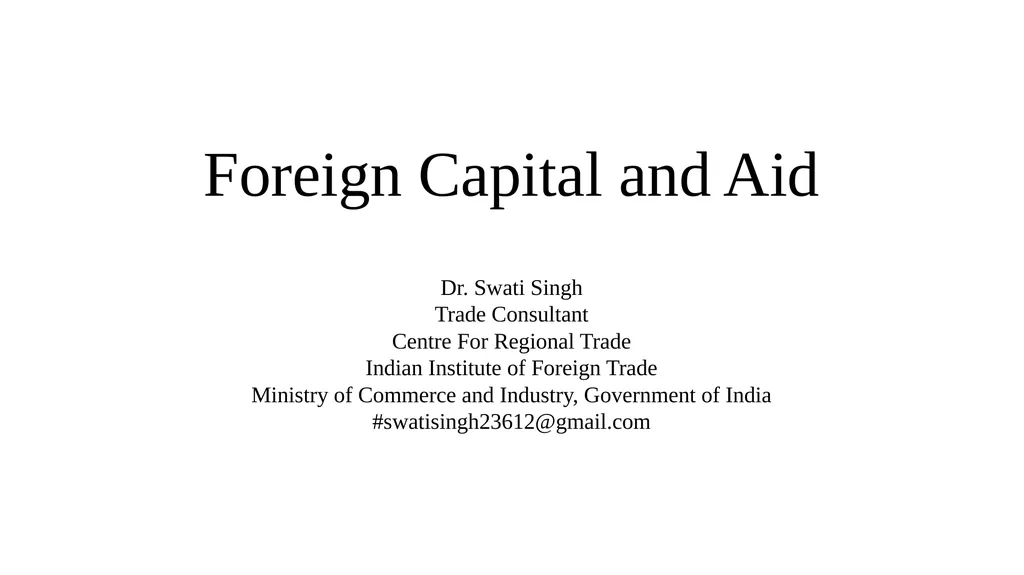
Foreign Capital and Aid Dr. Swati Singh Trade
Author: cheryl-pisano | Published: 2025-05-24
Description: Foreign Capital and Aid Dr. Swati Singh Trade Consultant Centre For Regional Trade Indian Institute of Foreign Trade Ministry of Commerce and Industry, Government of India swatisingh23612gmail.com Topics to be covered What is Foreign
Download Presentation
Download the PPT/PDF: Download
Transcript:
Loading transcript�